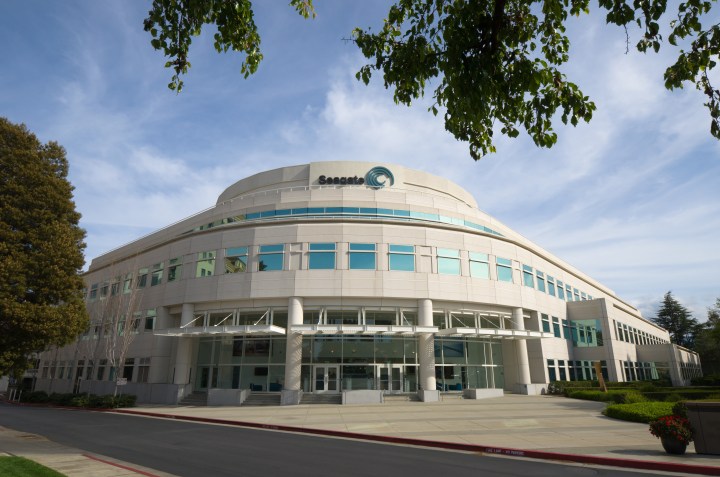
Western Digital started selling helium-filled drives to the consumer market earlier this year, two years after WD subsidiary HGST started selling such drives to the enterprise market. Seagate, Western Digital’s primary competitor, has been absent from the helium market until now. While prices aren’t specifically known, but these drives will likely be the most expensive that Seagate sells, Anandtech is reporting.
It may sound silly, but filling a hard drive’s enclosure with helium reduces friction. This reduces wear and tear, and also slightly lowers energy usage. Spread over tens of thousands of drives in a data center, these savings add up, but this technology requires drives be hermetically sealed in order to work.
Seagate is aiming squarely at the server market with its helium-filled Enterprise Capacity line. The drives will feature a 256MB multi-segmented cache and platters that rotate at 7200RPM. Seagate claims burst transfer rates will be up to 600 megabytes per second; sustained transfers max out at 243MBps.
These specs are all in line with HGST’s offerings, but there’s one notable problem: energy usage. Seagate edges out HGST while idle, with 4.5W of usage compared to HGST’s 5W, and while reading, with 6.5W to HGST’s 6.8W. But Seagate’s drive uses 8.5W while writing, compared to HGST’s 6.8. That’s going to hurt the drive in a server environment.
Seagate’s drive, like HGST’s, is warrantied for five years.
Seagate is in on the helium game now, and that competition will surely prompt new innovations. And the research done at the enterprise level is likely to trickle down to consumers eventually, in the same way HGST’s offerings eventually came to the market as a Western Digital consumer drive. Users have a lot to look forward to.
Editors' Recommendations
- The average life span of your hard drive will shock you
- Samsung’s 2nd-generation SmartSSD can process data right on the drive
- Microsoft could finally kill HDD boot drives for good
- A new supply shortage is now hitting SSDs and hard drives
- What is a hard drive?


